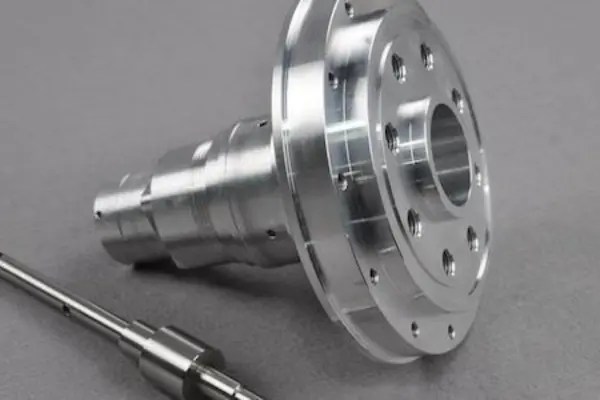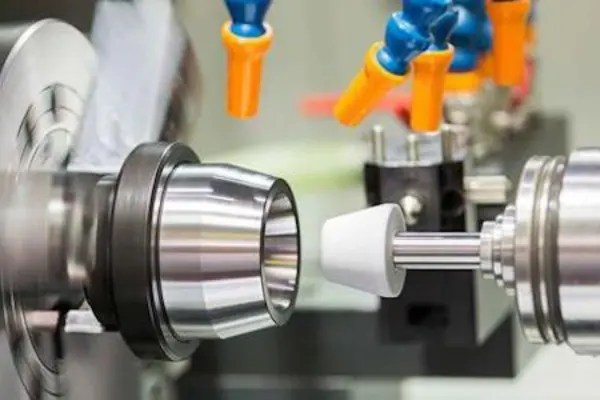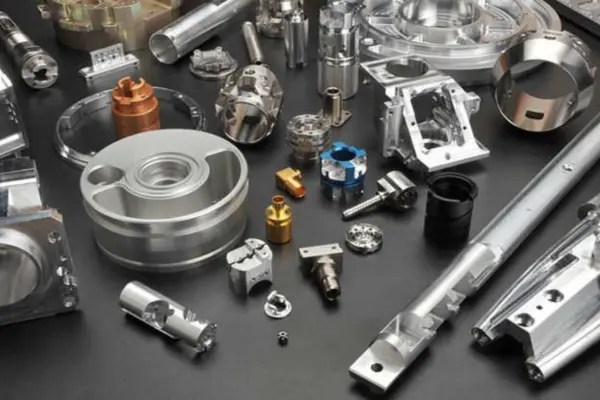In the fast-paced world of aerospace machining, precision and reliability are paramount. The intricate components that make up modern aircraft demand manufacturing processes that leave no room for error. CNC grinders remove small amounts of material using a high-speed abrasive wheel as a cutting tool, offering aerospace manufacturers a cutting-edge solution to craft complex parts.

The grinding wheel rotates in the X, Y, and Z-axis while the part(s) connected to the machine table move. While the movement of the grinding wheel depends on the size of the part(s), the grinding wheel may take several passes to reach the desired dimensions.
CNC grinding machines operate based on software. To enhance the efficiency of your machines, the CNC software must be updated. In a single installation, the most up-to-date software provides the capability to carry out a variety of operations. This allows for cost reduction and time savings in all stages of production. These machines have come a long way in terms of design, construction, stiffness, and application over the last ten years compared to other common machine tools used in manufacturing.
Table of Contents
Heat Conduction for the during CNC grinding
There are several ways thermal deformation can affect machining accuracy. This strategy takes advantage of the CNC machine’s ability to follow intricate cutting paths. A trochoidal mill is a small mill (less than the cut itself) that follows a curve like the spring side projection of a flat surface. During the second curve, the mill cuts cuts the metal and then cuts again.
This strategy portions the time of contact of the tool with the part, allowing for a period for it to be effectively cooled by the cutting liquids. For example, changes in the workshop’s ambient temperature, friction heating due to motor and mechanical operation, cutting heat, and the cooling medium can cause uneven temperature increases in different parts of a machine tool, resulting in changes in machine form accuracy and in machining accuracy.
Thermal deformation affects the machining accuracy of a machine tool, especially in environments where temperatures are constantly fluctuating. Machine tools consume energy during operation. A large proportion of that energy is converted to heat, resulting in physical changes in the machine tool’s various components. Machine tool designers need to understand the mechanism of heat formation and the rules of temperature distribution to minimize thermal deformation.

Grinding of Superalloys
The utilization of nickel superalloys in aerospace and aviation applications offers a range of benefits that are not available in other alloy metals. When alloyed with certain metals, nickel can form a high-temperature alloy with a variety of advantageous properties, such as resistance to creep and other harsh conditions while providing dependable performance.

Additionally, nickel alloys possess a naturally high strength profile, which allows them to withstand extremely high pressure and conditions due to their high oxidation and corrosion resistance. This resistance makes virtually any nickel alloy suitable for high-pressure applications where strength and longevity are of paramount importance. Manufacturing with high-performance materials typically presents manufacturing challenges.
Superalloys tend to work harder at the surface than other materials and produce heat during the machining process. Because superalloys conduct heat relatively poorly, high temperatures accumulated at the surface can disrupt the cutting process, deform the part, or damage it. When comparing the machinability of different alloys based on cutting speed and surface finish, tool life, and other factors, the relative conductivity of alloys is as follows: Carbon steel 1212 is rated at 100 percent. Stainless steel 440 is rated at 45 percent. Inconel 700 is rated at 19 percent.
Research and Development for CNC grinder and Machining
Research and development (R&D) are a critical phase in any industry, and aerospace machining is a front-runner in this phase. The 3D CAD model directs the CNC machine to produce parts, enabling aerospace engineers to develop, test, and modify new prototypes in a short amount of time. The cost-effective rapid prototyping of CNC machines is a cost-effective solution for aerospace companies, as it does not need to invest in tools and keeps costs down.
The most advanced aerospace components are equipped with AI (Artificial Intelligence) and machine learning software, allowing aerospace companies to identify manufacturing indicators quickly and easily to meet the requirements of the market. Thus improving the quality and longevity of machined aeronautical components.

Every part should be of the highest quality, with the best tolerances and performance. So that they do not fail during flight, which can cause thousands of dollars of damage to an aircraft or a space station, and create a huge safety risk for the end user. Aeronautical machining companies strive to meet all these requirements, while also ensuring that the aircraft is apt enough.
Conclusion
By varying the abrasive grain sizes of the wheel, cutting forces can be controlled and surface finish can be achieved. The grinding wheel’s porosity can be controlled to allow coolant to flow into the cut as well as speed up chip evacuation.
The diamond dressing allows for highly precise wheel shapes to be formed to produce complex parts with tolerances that meet or exceed 0.0001” or better. Continuous wheel dressing allows for process control that can’t be achieved with an abrasive cutting tool that gets duller with every cut.
Grinding continues to be used for productive rough turning as well as for milling superalloys. However, for finishing operations, grinding is usually the preferred process. Grinding is often seen as an expensive, dirty, and slow process, but it has several clear advantages when working with superalloys.

Mahedi Hasan is a Textile Engineer, as well as a Top Rated content writer at Upwork, a Level 02 Seller at Fiverr, Level 02 Publisher at Ezoic. A passionate textile and fashion content writer, fashion SEO expert, and fashion web designer. Having a B.Sc. in Textile Engineering Degree from Textile Engineering College, Noakhali (TECN). The department is Apparel Engineering. Highly Experienced fashion writer for the last 3+ years. Have extensive 7 years of experience in the wholesale clothing business.

